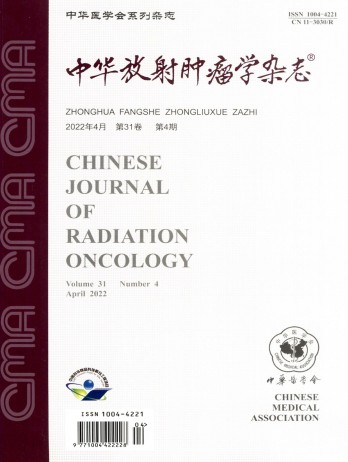Daily quality control data analysis and process evaluation of linear accelerator
引用次数: 0
Abstract
Objective To analyze the quality control data of linear accelerator detected by Daily QA3 and to evaluate this quality control process using statistical process control. Methods After the calibrations of the accelerator and Daily QA3, Daily QA3 device was used to perform daily quality control by technicians and physicists and 100 groups and 30 groups of daily quality control data were collected. After the accelerator and Daily QA3 were re-calibrated, Daily QA3 device was utilized to perform daily quality control by technicians and 100 groups of the daily quality control data were repeatedly collected. The variations of normalized signal-to-noise ratio of quality control data collected after two calibrations were analyzed. The first 30 groups of daily quality control data measured by technicians and physicists were adopted to calculate the I-MR control chartsand compare the location of CL and the range of UCL and LCL. The process capability indices were calculated for three different quality control processes bytechnicians and physicists, respectively. Results For twice calibrations, normalized signal-to-noise ratio of quality control data significantly changed before 6 weeks, became stable between 6 and 8 weeks, and the changes became smaller after 8 weeks. For dose output measured by physicists, the rang of UCL and LCL was more narrow. In terms of flatness and symmetry, the location of CL was closer to zero. Regarding dose output and flatness, the process capability indices of three different quality control process were all satisfied ≥1, whereas unsatisfied for transverse symmetry. Conclusions The first 30-40 data points should be adopted to delineate I-MR control chart of the linear accelerator in daily quality control process. The quality control process should be completed by a fixed and small group of personnel and an optimal tolerance level should be customized. Key words: Linear accelerator; Quality control; Statistical process control; Control chart; Process capability index直线加速器日常质量控制数据分析及工艺评价
目的分析Daily QA3检测直线加速器的质量控制数据,并应用统计过程控制方法对直线加速器的质量控制过程进行评价。方法在对加速器和Daily QA3进行标定后,由技术人员和物理学家利用Daily QA3装置进行日常质控,收集100组和30组日常质控数据。加速器和Daily QA3重新校准后,由技术人员利用Daily QA3装置进行日常质控,重复采集100组日常质控数据。分析了两次标定后质控数据归一化信噪比的变化规律。采用技术人员和物理学家测量的前30组日常质量控制数据计算I-MR控制图,并比较CL的位置以及UCL和LCL的范围。分别由技术人员和物理人员计算了三种不同质量控制过程的过程能力指标。结果两次校准后,质控数据的归一化信噪比在6周前有显著变化,在6 ~ 8周间趋于稳定,8周后变化变小。对于物理学家测量的剂量输出,UCL和LCL的范围较窄。在平整度和对称性方面,CL的位置更接近于零。在剂量输出和平整度方面,3种不同质量控制工艺的工艺能力指标均满足≥1,而横向对称性不满足。结论在日常质量控制过程中,应采用前30-40个数据点划定直线加速器的I-MR控制图。质量控制过程应由固定的小团队人员完成,并应定制最佳公差水平。关键词:直线加速器;质量控制;统计过程控制;控制图;过程能力指数
本文章由计算机程序翻译,如有差异,请以英文原文为准。
求助全文
约1分钟内获得全文
求助全文
来源期刊
自引率
0.00%
发文量
6375
期刊介绍:
The Chinese Journal of Radiation Oncology is a national academic journal sponsored by the Chinese Medical Association. It was founded in 1992 and the title was written by Chen Minzhang, the former Minister of Health. Its predecessor was the Chinese Journal of Radiation Oncology, which was founded in 1987. The journal is an authoritative journal in the field of radiation oncology in my country. It focuses on clinical tumor radiotherapy, tumor radiation physics, tumor radiation biology, and thermal therapy. Its main readers are middle and senior clinical doctors and scientific researchers. It is now a monthly journal with a large 16-page format and 80 pages of text. For many years, it has adhered to the principle of combining theory with practice and combining improvement with popularization. It now has columns such as monographs, head and neck tumors (monographs), chest tumors (monographs), abdominal tumors (monographs), physics, technology, biology (monographs), reviews, and investigations and research.

 求助内容:
求助内容: 应助结果提醒方式:
应助结果提醒方式:


